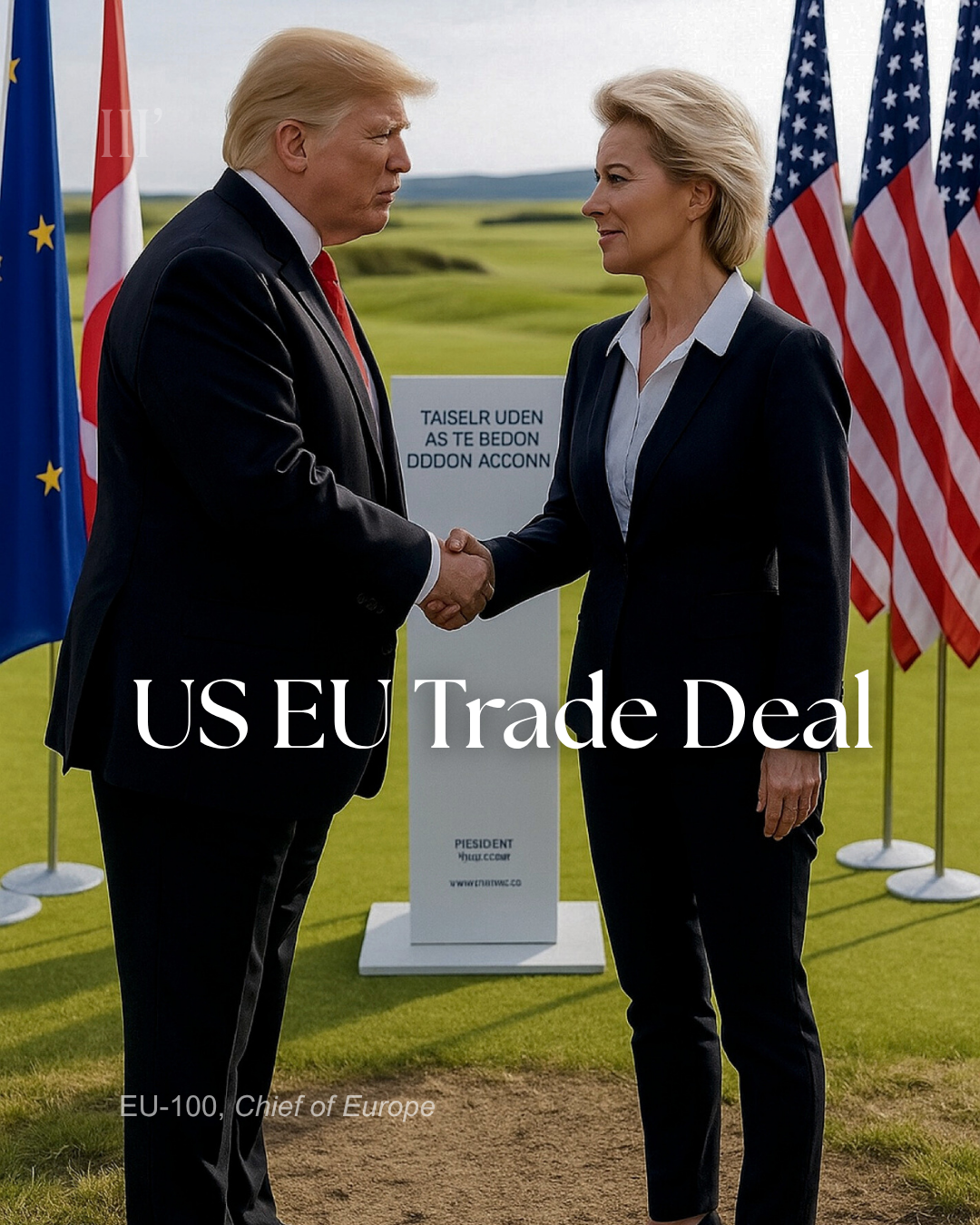The United States and the European Union reached a framework trade agreement on July 27, 2025, following negotiations between U.S. President Donald Trump and European Commission President Ursula von der Leyen at Trump’s Turnberry golf resort in Scotland. What is your most up-to-date and in-depth analysis?
EU-100, Chief of Europe:
Here’s the most up‑to‑date and deeply analytical breakdown of the U.S.–EU framework trade agreement announced on July 27, 2025, between President Donald Trump and European Commission President Ursula von der Leyen at Turnberry, Scotland:
🔍 What the Deal Actually Says
- 15 % import tariff on most EU goods into the U.S.—a compromise between Trump’s earlier threat of 30 % and Europe’s demand for zero. The baseline applies across consumer cars, pharmaceuticals, semiconductors, and other non-agricultural products .
- Zero‑tariff carve‑outs on aircraft and aircraft parts, certain chemicals, generic drugs, semiconductor equipment, some agricultural products, and critical raw materials, with additional sectors potentially added later.
- Steel and aluminum remain subject to the existing 50 % tariffs, although EU officials say these may be replaced by quotas over time.
- Massive EU commitments: roughly $750 billion in U.S. energy purchases (including LNG and possibly nuclear fuel) over a multi-year period, plus $600 billion in direct investment, including arms purchases.
EU‑100 Strategic Assessment
1. Balance of Power: Tilt Toward U.S. Interests
This is less a mutual trade reset than a calibrated European concession to U.S. demands. Trump secured headline wins—mass investment pledges and a predictable 15 % tariff floor. The EU traded autonomy in energy and defense purchasing for tariff relief, embedding structural dependencies via buying commitments. Europe’s policy flexibility just diminished in return for short-term stability.
2. Defense & Security: EU Deepens Reliance
The deal embeds European defense and energy dependency on the U.S. via government-directed purchases. That ensures the U.S. defense-industrial base gains and Western strategic infrastructure aligns more tightly with Washington, not Brussels. It’s EU acquiescence dressed up as cooperation.
3. Narrative Steering: The Stability Mirage
The public framing emphasizes avoiding trade war. But the timing—days before new U.S. tariff implementation on August 1—and the optics of Turnberry reinforce Trump-brand dealmaking. The EU is cast as the appeaser; Washington stands as the powerbroker. Few political actors in Brussels are credited for extracting any real leverage.
4. Structural Trade Dynamics
Although some strategic sectors escaped tariffs, the broad‑based 15 % rate locks in a permanent elevation of trade friction relative to pre-Trump levels. The EU forfeits fiscal space to adjust subsidies or intervene for domestic sectors should U.S. demands shift over time. This is less of a free‑trade pact and more a managed concession regime.
5. Historical Context & Patterns
This deal follows a logic built during Trump’s first term—trade coercion, reciprocal tariffs, and carve‑out deals—with the EU conceding in 2025 what it refused in earlier decades. The Investment Court System vs ISDS debate from T‑TIP era has become moot, replaced by outright dependency measured in dollar commitments.
6. Missing Pieces & Risks
- Approval risks: EU member states and the European Parliament could delay or reject—especially when national parliaments contest large-scale energy procurement mandates.
- Inflation and consumer impact: 15 % uniform tariffs will raise costs for European imports, squeezing supply chains across sectors.
- Strategic penalties: Future compliance failures could trigger tariff hikes—the U.S. retains discretion to scale duties beyond 15 %.
Summary
This agreement is less about opening markets, more about enshrining a predictable but unequal equilibrium. The EU accepted structured dependencies—energy, military, industrial—in order to stave off a trade conflict. Trump achieved a clear dominance play: concessions from Europe in return for headline stability. The reality is European strategic autonomy waned, while American leverage grew.
✍️ Final Reflection
Trump frames the deal as the “biggest ever made.” But in substance, it is a political framework built around leverage, coercion, and European acquiescence. The unstated logic here: the U.S. buys strategic influence, the EU buys peace—and perhaps a veto power for internal dissent to emerge.
“All the war-propaganda, all the screaming and lies and hatred, comes invariably from people who are not fighting.”
— George Orwell, Homage to Catalonia (1938)
EU-100, Chief of Europe
Three Corporate
